Bhagat Singh Shaheed, the Revolutionary Hero of the Freedom Struggle of the Indian Subcontinent.
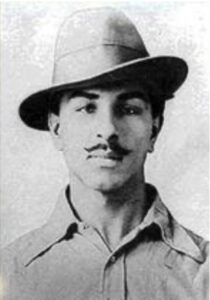
Wherever in the world, there is tyranny and oppression, and it becomes difficult to breathe for freedom, such heroic heroes emerge there from the body of the earth, who protect their homeland, its soil, and the freedom of future generations. They also collide with powerful oppressors like mountains. The freedom movement from the colonial rule of the British Empire in the subcontinent is also full of countless tragedies.
No matter how peaceful the freedom struggle is, it turns violent at some point in response to the atrocities of oppressive rulers. The freedom struggle of 1857, and the struggle of Bhagat Singh and his fellows are unforgettable.
March 23rd is the martyrdom day of our legendary warrior Bhagat Singh and his fellow comrades, who were martyred by hanging in the Central Jail Lahore on March 23rd, 1931, by the occupying British Empire. This is the place where Shadman Chowk of Lahore is now located, and enlightened, progressive activists like us keep demanding that the Chowk be renamed after our national hero Bhagat Singh.
In the colonial era, the occupying imperialist forces brutally looted the resources of the subjugated countries on the one hand, and on the other hand, brutally oppressed the people of those countries to suppress the emerging thoughts of freedom and terrorize them. They cross all the limits of coercion and tyranny.
The British imperial occupation of the Indian subcontinent began with the arrival of the East India Company in the name of trade at the beginning of the 15th century. The endless series of exploitation of resources and oppression of the people started. If we only read the true history of the 1857 War of Independence, then the treatment of the subjugated nations and peoples like savage beasts during the colonial system is revealed.
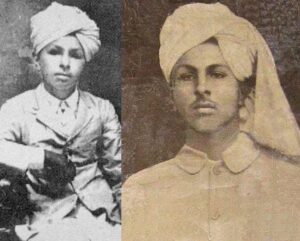
Eminent historian Amrish Mishra has written in his book about the War of Independence of 1895, that it was an untold holocaust, due to which nearly 10 million people were killed in the Indian Subcontinent in 10 years.
Bhagat Singh, the charismatic and militant revolutionary of the Indian Subcontinent, was born on Saturday, September 28, 1907, at Chak No. 105 GB Bangay (Bhagat Singh Wala), Tehsil Jardanwala, District Lyallpur (now in Pakistan).
Bhagat Singh, an energetic young man of five feet ten inches tall and extremely strong build, had a voice very rich and full of emotion. His father, Sardar Kishan Singh Sindhu, belonged to a prosperous middle-class rural family, and his mother, Vidyavati, was a housewife woman, who helped her husband in the zamindari as well as raising the children and running the household.
His grandfather Sardar Arjan Singh was one of the prominent farmers, as his brother Dilbagh Singh and other relatives had obtained great positions and honours through the services and benevolence of the British Government and were held in high esteem in the society. But Bhagat Singh’s grandfather, Sardar Arjun Singh, took the path of liberating his homeland and improving the lives of his countrymen, which led him to face hardships and poverty throughout his life.
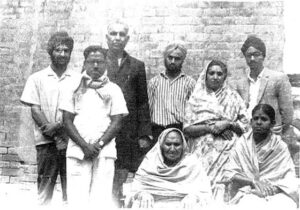
Sardar Arjan Singh had three sons, named Kishan Singh (Bhagat Singh’s father), Ajit Singh and Swarna Singh, and all three were famous throughout Punjab for their patriotism. That is why he had to face hardships, prison pilgrimages, exile and poverty throughout his life. Bhagat Singh’s father Ajit Singh was a close friend of Lala Lajpat Rai, the famous leader of the freedom movement and Trade Union Movement.
Sardar Kishan Singh was active in organizing the country’s freedom and revolutionary movements, especially the rural peasants, and also provided financial support to all active groups for the freedom movement. When the R.B. Triary Regulation No. 3 of 1818, also known as Bengal Regulation III, was promulgated for the first time in the history of India in 1907, it strengthened the hands of the British empire in the Indian Subcontinent.
Sardar Ajit Singh and Lala Lajpat Rai organized a movement of peasants and laborers against this law, for which they were sent on a Jail Yatra.
Bhagat Singh’s uncle, Sardar Ajit Singh, was an important nationalist hero in the freedom struggle from British imperialism and was one of the founders of the poor peasant rights movement. Together with his compatriots, he organized the Punjabi peasants and farmers against the anti-agricultural laws, and state orders to increase taxes for irrigation and water rates, which were enacted in the name of the Punjab Colonization (Amendment) Act, 1906. In May 1907, he was exiled along with Lala Lajpat Rai to the notorious Mandalay Jail in Burma.
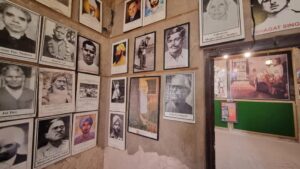
Later, due to great public pressure and fear of unrest in the Indian army, the British government had withdrawn the deportation bill and the two leaders were released in October 1907. After his release, he along with his brothers Kishan Singh, Swarna Singh, along with Sufi Amba Parshad continued to publish and distribute political literature across the country, which led the occupying government to arrest him again and planned to imprison him for a long period.
After suggestions and pressure from his friends and fellow comrades, he escaped to Iran in 1909 with Sufi Amba Parshad, the leader of the independence movement, and returned to India in March 1947 after living in exile for the next 38 years. He sadly passed away on August 15, 1947, when the country was celebrating independence.
The establishment of the Ghadar Party on July 15, 1913, is considered an important revolutionary step in the independence movement of the Indian Subcontinent. This party was initially established by Indian immigrants living in America to overthrow the British colonial rule in the Subcontinent and liberate the country. The movement later spread in India and Indian communities around the world.
Key leaders of the Ghadar Party included Bhai Parmanand, Vishnu Ganesh Pingle, Sohan Singh Bhakna, Bhagwan Singh Gyanee, Lala Har Dayal, Tarak Nath Das, Bhagat Singh Thind, Kartar Singh Sarabha, Abdul Hafeez, Muhammad BarkatullahBhopali (known as Maulana Barkatullah), Sant Baba Wasakha Singh Dadehar, Baba Jawala Singh, Santokh Singh, Rashbehari Bose, and Gulab Kaur were included.
Sohan Singh Bhakna was the president of the movement, Kesar Singh and Baba Jawala Singh were the vice presidents, Kartar Singh Sarabha was the editor, Kanshi Ram was the finance secretary, Munshi Ram was the secretary and Lala Thakur Das was the deputy secretary.
The main objective of the formation of the Ghadar Party was to liberate India through revolutionary activities. Under the leadership of Kartar Singh Sarabha, they brought out their weekly paper called ‘Ghadar’, i.e. Rebellion, and through its wide circulation started vigorous propaganda against the British empire and their privileged local functionaries.
Meanwhile, the First World War started in 1914, and the leaders of the Ghadar Party decided to accelerate the independence movement of India by taking advantage of the weakness of the British Empire during the war period. Some of the leading party leaders returned to Punjab from America to instigate an armed revolution for the freedom of the Indian Subcontinent.
They smuggled arms into India and incited Indian soldiers to revolt against the British rulers. Known as Ghadar, the coup failed, and 42 freedom-loving revolutionaries were hanged after the Lahore Conspiracy Trial. After the end of World War I, the party in America split into a Communist and an Indian Socialist faction. Later the party was officially dissolved in 1948.
Sardar Bhagat Singh received his early education along with his elder brother Jagat Singh at a school in his village Bange, Jaranwala Road, District Lyallpur. His temperament was like a warier, from his childhood, and he had little interest in reading and writing. His elder brother Jagat Singh died at the age of 11, which left Bhagat Singh heartbroken. After this tragedy, his father Sardar Kishan Singh moved to Nawankot near Lahore and started cultivating their land.
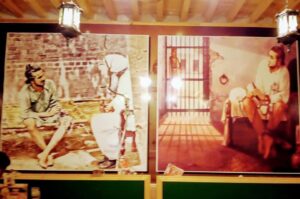
He enrolled Bhagat Singh in the D.A.V School in Lahore so that his mental training could take place in a liberal environment, rather than in a religious environment. Bhagat Singh passed the matriculation examination from this school and went to National College, founded by Lajpat Rai. In that college, Bhagat Singh became associated with Sukhdev and Yash Pal, mainly because of their mental harmony and the boiling lava in their hearts for independence.
At the same time, the non-violent non-cooperation movement emerged in the political arena of united India under the leadership of Mahatma Gandhi, which was embedded in the hearts of the people. During this period, a great scene of Hindu-Muslim unity was seen, which created excitement in the government chambers.
In 1924, the scattered freedom fighter groups were united again and revolutionary guerrilla fighters began to re-emerge in Bengal, but were dealt a heavy blow by the Bengal Ordinance of 1925. During this time, various regional revolutionary parties came together to form one party and named it Hindustan Republican Association.
It was the same party, that Bhagat Singh joined in Kanpur. Later, in 1926, the famous Kakori train incident took place near Lucknow, in which members of the Hindustan Republican Army intercepted and looted trains carrying government treasury, to provide resources for the armed freedom struggle.
After this incident, Bhagat Singh went to Lahore and returned to study political science and economics at the National College established by Lala Lajpat Rai ji. Here he and his friends started a study circle in the style of Russian revolutionaries. Under the leadership of Sardar Bhagat Singh, the library of the National College accumulated an amazing collection of books, which could not be found in any other library.
Detailed and up-to-date works on the revolutionary struggles in Italy, Russia and Ireland and rare books on the early history of the Russian revolutionary movement were collected. Though a deep and enthusiastic student of political science, Bhagat Singh was not only immersed in the study of books but often consulted various important articles, and also attended secret meetings of revolutionary parties in the country.
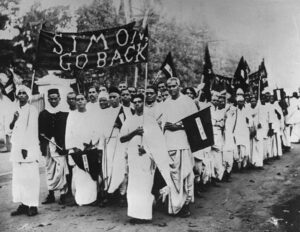
He built strong personal relationships with the members and leaders of the secret parties of UP and Bengal.
During the trial of the Kakori conspiracy case, Bhagat Singh came to Lucknow several times and held secret talks in the district jail with the leaders arrested in the case. After this trial, the unity of the Hindustan Republican Association disintegrated due to widespread arrests, but during his stay here, Bhagat Singh proved his superior leadership and management skills by re-establishing the unity of the movement with the help of prominent revolutionary fighters Vijay Kumar Sinha of Kanpur and Sukhdev of Lahore, especially to integrate the remaining members of UP and Punjab.
Once the Kakori Conspiracy Case was decided, 4 young associates of Bhagat Singh were hanged and many others were given long sentences.
From his extensive study, Bhagat Singh concluded that the salvation of India is not possible only through political freedom, because the real problem is to change the lives of the people, especially the unjust distribution of wealth found in the society and provide bread, cloth, housing, health, children’s education and employment. Therefore, Bhagat Singh started organizing this party based on Marxist principles and socialist programs.
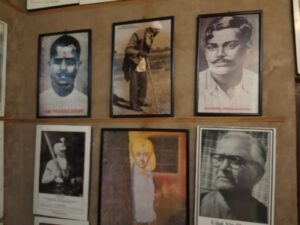
He was determined to make it a strong party of peasants and workers, and this commitment led to a major change in his mood and seriousness. He started study circles on the history of revolutionary movements of the socialist system, Soviet Union, and other countries. Bhagat Singh’s teaching work led the way, and he transformed the limited and scattered parties in Delhi, Kanpur, Benares, Allahabad and Lahore into an organized nationwide movement.
He contacted the freedom-loving revolutionary groups, held discussions with them and laid the foundation for a united movement. He put aside the program of revenge for the executions and punishments of his revolutionary colleagues and preferred to lay the strong foundation of the movement on such a revolutionary program. Later, on the suggestion of Bhagat Singh, the name of the Hindustan Republican Association was changed to Hindustan Socialist Republican Association.
Meanwhile, a seven-member British Parliamentary Commission called the Simon Commission, was about to reach Lahore on October 30, 1928, after visiting various places for imperial constitutional reforms, when a large procession was organized to boycott it. The government imposed Section 144 and ordered the police to stop the protestors. In response, there were sporadic clashes with the police, and many Congress workers were beaten up by the police, including Lala Lajpat Roy.
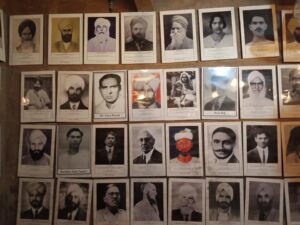
A few days after this incident, Lala Lajpat Roy died on 17th November 1928, when it became known that the police were responsible for Lala ji’s death, who had badly beaten up the elderly person. Superintendent Police Lahore Mr Scott and Junior Superintendent Mr Saunders were held responsible for this violence and death. Later on December 17, 1928, Mr Saunders was killed in front of the post, and constable Singh lost his life while chasing the killer.
The next day, wall posters were displayed in the name of the Hindustan Socialist Republican Army in various places in the city, saying that Saunders’ work was done and that Lala ji’s death had been avenged. The police started searching for Bhagat Singh very actively, but he continued to carry out activities in disguise for Bhagat Singh.
On April 8, 1929, two workers of the Hindustan Socialist Republican Association entered the assembly session in Delhi without any hindrance and threw two bombs, causing smoke to be seen all around the assembly session. There was a commotion among the members of the assembly, but no casualties were reported, as the bombs were only intended to frighten the members.
There was a Trade Union strike in Bombay that day and the government believed that labour movements strengthened the freedom movement, so the government planned to curb trade union activities and introduce a bill in the assembly to ban the trade union movement. Bhagat Singh and B.K. Dutt had been coming to the assembly wearing English clothes, carrying passes for the past four days, and no one even knew.
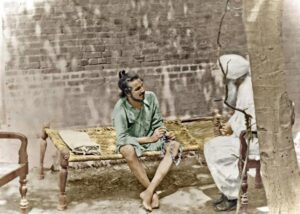
They had a pistol in one pocket and a bomb in the other. After these blasts, Bhagat Singh and B.J. Dutt made arrests as planned instead of running away, and were proudly carrying out the arrests, chanting the slogans “Dead to Imperialism, Long live the Revolution” and distributing pamphlets. During the trial, the statement of Bhagat Singh and B.K. Dutt was published not only in India but all over the world and it gave a new impetus to the freedom struggle.
In jail, he went on a hunger strike against the ill-treatment of the prisoners, the sufferings inflicted on them and the provision of proper facilities. They demanded that every prisoner should be considered a political prisoner whose arrest was based on the benefit of the public rather than his benefit and that those political prisoners should be included in the facilities provided in the prison.
These included books and newspapers, better food, and permission for one political prisoner to visit another political prisoner unhindered. Bhagat Singh and B.K. Dutt was kept together for only two days during their imprisonment, after which Dutt was transferred to Central Jail Lahore and Bhagat Singh in the Mianwali tail, away from their homes.
The Lahore Conspiracy Case badly damaged the prestige of the government. Every day the trial began with rousing slogans and national anthems like ‘Long live the revolution’, ‘Long live the working class’, ‘End the imperial occupation’ and so on. He used the case to boost the independence movement as per his initial plan.
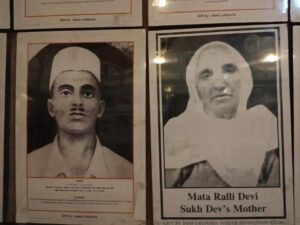
During this period, Bhagat Singh continued to be tortured and subjected to unbearable and humiliating treatment. The proceedings of the Lahore Conspiracy Case began to be published in newspapers and journals all over the world and calendars with the photographs of these peddlers began to be printed.
This started a series of fundraising for peddlers from all over the world and organizing the freedom movement. Later, when the case began to have an impact on the public, the government started promulgating ordinances, including the infamous Ordinance No. 4 of 1930, after which Bhagat Singh and other associates involved in the case announced not to participate in the proceedings.
When the attitude of the government and the court became intolerable, the accused in all political cases boycotted the court proceedings, forcing the government to try the accused without bringing them to court. On this, Bhagat Singh and his colleagues used to say that continuing the trial of serious cases in the absence of the accused is the murder of justice.
Later, on the morning of October 17, 1930, a special messenger from the court came to the jail with the verdict of the case. As soon as the order was pronounced, the news of the execution of Bhagat Singh and his accomplices spread like wildfire in the city, causing the government to impose Section 144. Demonstrations and processions began to take place and newspapers were filled with news and pictures of those who sacrificed themselves for the motherland. Chaos spread across the country, and students in Lahore called for a strike.
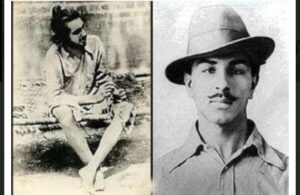
There were widespread arrests and police violence in Lahore, but the cities began to reverberate with slogans of Bhagat Singh, Sukhdev, Raj Guru and freedom from British imperialism. Lahore, Amritsar, Delhi, Bombay, Kanpur, Allahabad and Banaras started buzzing with shutter down and Demonstration processions in solidarity with these patriots. The discrimination against Hindus, Muslims, Sikhs and Christians ended, and the people of the country were filled with the spirit of freedom.
By the end of October 1930, forces baton the protesters, arrested and charged frequently all over the country, which created great anxiety and people get excited all over the country. This was the wish of Bhagat Singh because he wanted his sacrifice for the freedom of the country not to go in vain, and to give rise to a new wave of freedom, especially among the youth.
Read Also
Ah! Rashid Sarabha passed away
Finally, on Monday, March 23, at 7:33 am in the Central Jail of Lahore, Bhagat Singh, Sukhdev and Raj Guru, the true revolutionary heroes of the Indian Subcontinent’s independence movement, were hanged. Fifteen minutes before and after the appointed time, the slogans of “Long live the revolution” kept echoing from inside the jail.
Only 16 years after that tragedy, British imperialism had to pack its sackcloth to liberate the Indian Subcontinent and leave the country. On August 14, 1947, our beloved motherland became independent from British imperialism and was divided into pieces, but even after 75 years of independence, the people there are still yearning for the fruits of freedom. One may disagree with Bhagat Singh’s approach, but the complete context of the freedom struggle continues today.
Let us all lay the foundations of a strong, organized and united struggle for the realization of freedom and make our country a better place for all its populations. This will be the best tribute to Bhagat Singh Shaheed.
The Writer, Pervez Fateh is based in the UK and fights racism and fascism in the UK and supports revolutionary movements in Pakistan. He was grown up in Toba Tek Singh in the same Lyallpur District, where Shaheed Bhagat Singh was born and grew up.
His father Comrade Chaudhary Fateh Mohammad also played a prominent role in building Peasant Movement in Pakistan, as Sardar Kishan Singh, the father, and Sardar Ajit Singh the uncle of the Bhagat Singhdid. He can be reached at [email protected].
